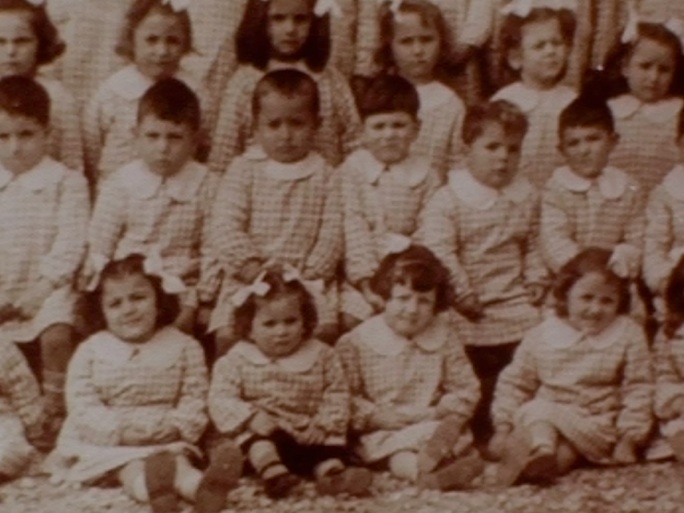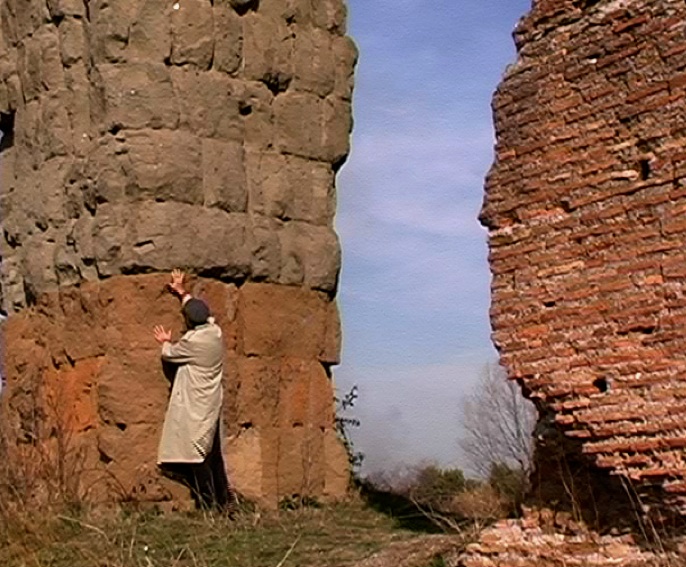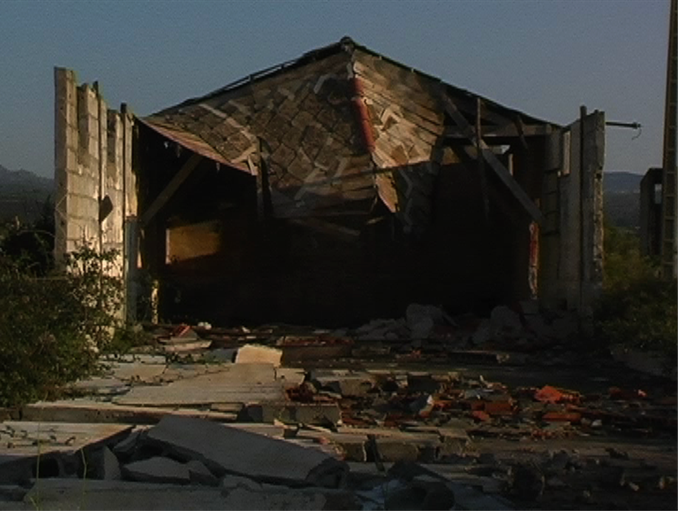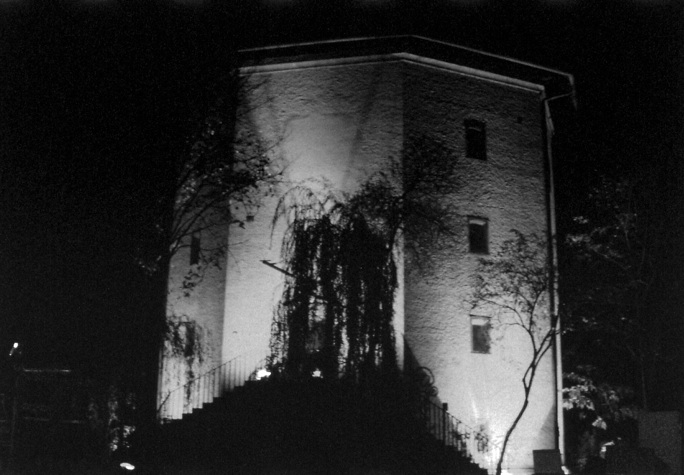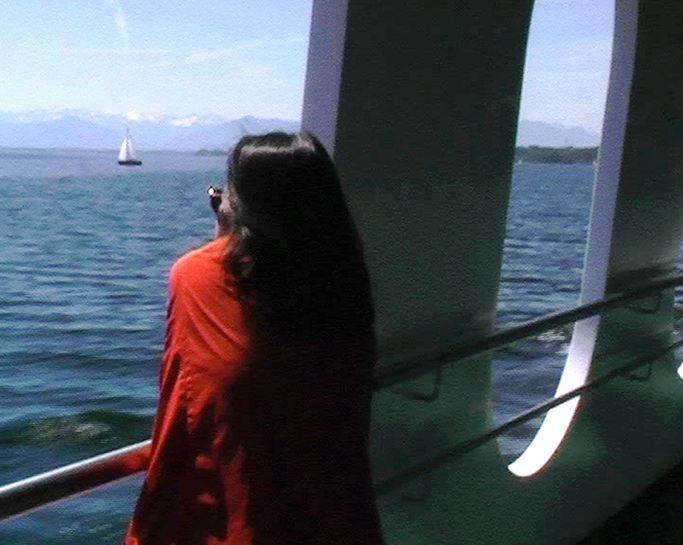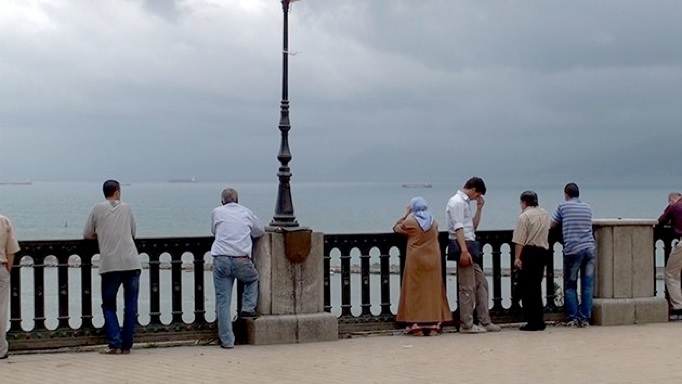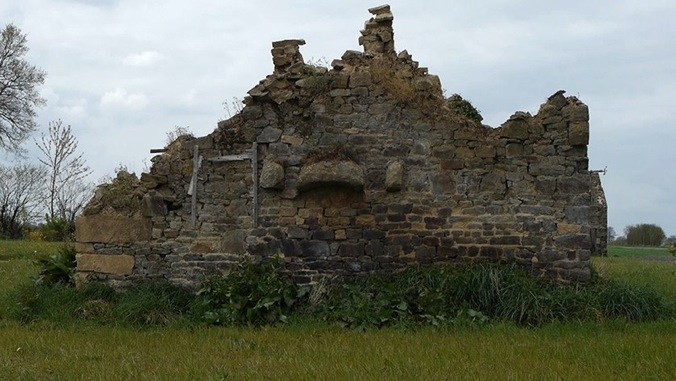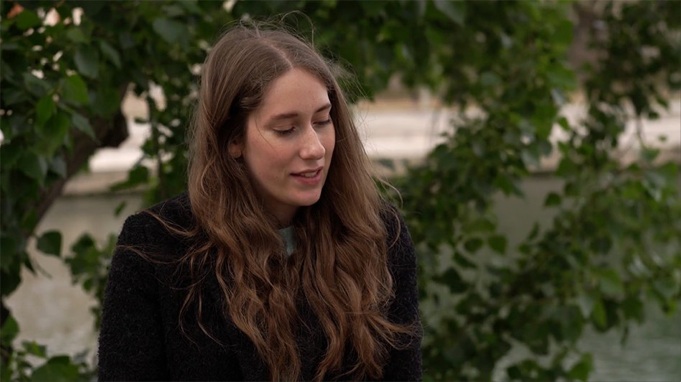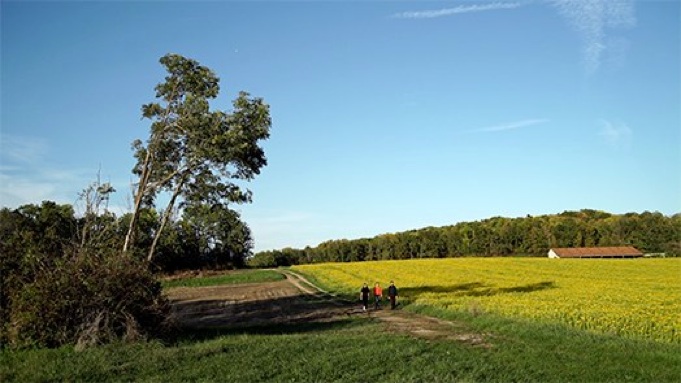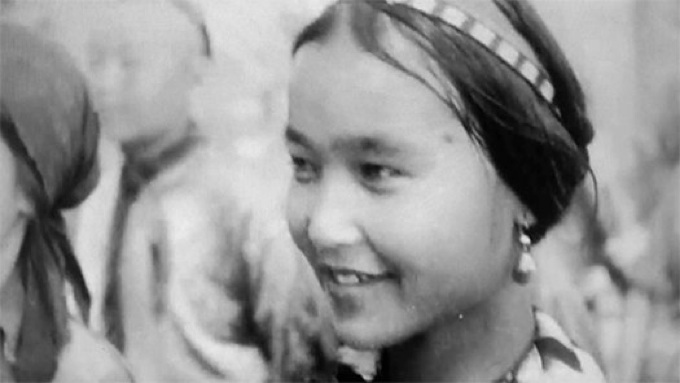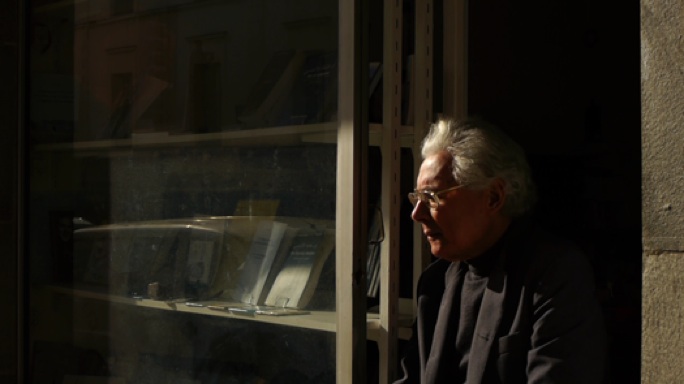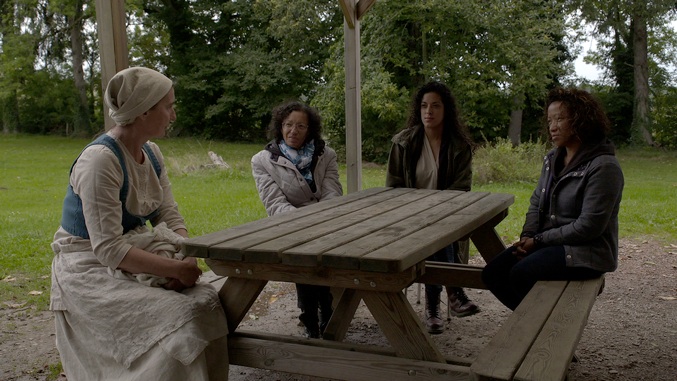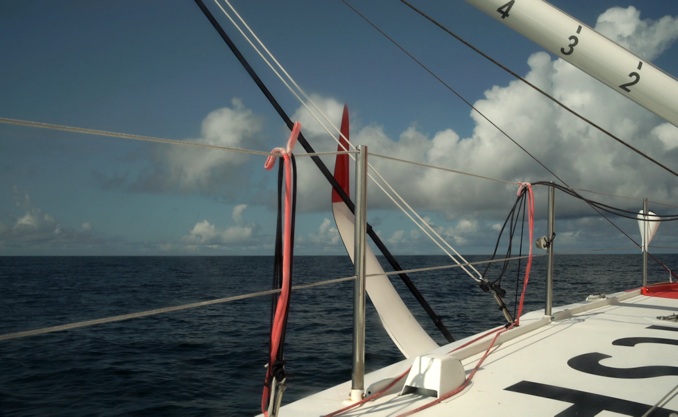claire angelini – film
ENGLISH
I understand cinema as a medium able to perceive places, landscapes, territories, via the thickness of their history: in front of the levels of time and the geological layers, the question is how the environment in which we are, is still imaginery livable and at the same time, how the history is able to appear in the sensitive world. At that point, the langage of the cinema – sound and image –makes it possible to interpret the world and to offer to this memory of the former times which haunts and acts us, the possibility of expressing itself at the present.
But how to offer a sensible perception of what has been buried, covered, or put apart, and yet concerns us, implies us, is contemporary for us and therefore essential? As an answer to the generalized control of the images, situations, space, and to the spectacularisation of the world, the matter is affirming cinema as the closest medium to be related to the history, and therefore, as a political mean.
Similar to the work of the historians by a certain number of aspects, the first of which an archaeological attention to the trace and a methodological search about how to “write” the past – but according to the particuliarities of the world –my purpose is to pay attention to the thickness and even the resistance of the reality (like the singularities of the places, the events and the subjects), and through my films, to attempt producing cinematic dispositions that are able to deal sensitively with these tangible expressions of the time.
The question of the style (as a writing) and the cinematic disposition of it, occupies the center of this work: it is how to organize a significant displacement from the points of view, and how to open the space of the cinema to a critical representation of the subjects to be treated. If, as Pasolini defines it, the cinema is the written language of reality, it is also a medium that makes possible to enter in our hybrid temporality and to understand it.
To offer to look in an other way at the reality also means to consider first the various layers of reality which coexist in a concrete way and to try to create a complexity to be seen with the own means of cinema (time and editing) . The attention to the memorial sedimentation of the history and the construction of filmic space as an essential vector of historical complexities, bring to visual and sound specific choices. No doubt, the implementation of the significant forms allows the spectator via the essential language of the edition, to establish the hidden relations between objects that were scattered, and by opening a field of thought physically generated by them.
Therefore, the central challenge of the cinema appears to be time itself. And, in order to inscribe “the history“ into the frame, several tools are requiered and used, not as a style but as a method: the langage of framing reality, the separation and the tension between image and sound – (sound beeing apprehended like the full emanation of the “environment”) the importance given to all the things that escape the frame like beeing also the integral part of the film reality, and finally the attention paid to the testimonies as the concrete part of our space and time.
Thus in «War is looming» (La guerre est proche), it is the territory itself that is revealed as beeing the main character of the film. The set is based on the use of the langage of the frame and their great precision–very close to some of the conditions of the photographic image – and it is also the possibility and the chance for the viewer to be able to excavate through his glance and hearing the registrated layers thar appear towards the movement and are an integral part of the physical world. By doing this, the film reveals from a concret point of view, based on physical marks, the society in which we live, and especially our politics and historical issues.
In the «film-essai» «Et tu es dehors/Und raus bist du! And out you go!» the narration build on the relation between the historical criminalisation of the “undesirable” and those of our times (poor, foreign migrants and people psychically fragile,) explores at the same time the thin border between fiction and documentary. Here the cinematographic work on the history is essentially based on the overprintings and sudden appearance of images, and the exploration of the physicality of the archives.
Whith «Back to the land of childhood» (Le retour au pays de l’enfance), the omnipresent framework tries decentring the glance towards what is cut and absent from the frame, as if the work of the memory were concretized in the significant parcelling out of crossed spaces, and as if the development of the film itself would mean a travel into the layers of space and time.
This externality, related to the substance of the deepened subjects, and especially to the exploration of the borders – the physical ground, but also the cultural and intellectual issues – is made in order to preserve a silence which induces a breathing between the things, and can be understood as the sign of the inalienable power of reality and the trace, as a Sehnsucht, of the possibility of a radical difference.
FRANÇAIS
Filmer, c’est percevoir des lieux, des paysages, des territoires, via l’épaisseur de leur histoire : face aux couches de temps et aux strates géologiques, il s’agit de se demander si le monde dans lequel nous sommes est encore imaginairement habitable mais aussi, comment l’histoire fait retour dans le sensible et dans quelle mesure le langage du cinéma – image et son – permet d’interpréter le monde et d’offrir à cette mémoire du temps d’avant qui nous hante et nous agit, la possibilité de s’exprimer au présent.
Mais comment donner à percevoir sensiblement ce qui s’est trouvé enfoui, recouvert, tu, ou simplement mis de côté, et pourtant nous concerne, nous implique, nous est contemporain et par là essentiel? Face au contrôle généralisé des images, des situations, de l’espace, et à la spectacularisation du monde, il s’agit d’affirmer d’emblée le cinéma comme un outil de l’histoire, et partant, comme un instrument politique.
Croisant le travail des historiens par un certain nombre d’aspects, au premier rang desquels une attention d’ordre archéologique à la trace, et la recherche d’une « écriture » du temps – mais selon une modalité particulière, attentive à l’épaisseur plastique du réel, à sa résistance même, ainsi qu’aux singularités des lieux, des évènements et des sujets, mes films s’attachent à produire des dispositifs filmiques à même de saisir à bras le corps ces expressions tangibles de l’histoire.
La question de l’écriture (ou dispositif) est ici au coeur du travail de cinéma: il s’agit d’organiser un déplacement sensible des points de vue, pour ouvrir l’espace de la représentation filmique à une représentation critique du ou des sujets à traiter.
Si, comme Pasolini le définit, le cinéma est «la langue écrite de la réalité», le film est ce qui permet d’intervenir dans notre temporalité hybride et de la comprendre. Car donner à voir, c’est avant tout considérer les différentes modalités du réel qui coexistent, sur le terrain, pour générer cette complexité que l’on prendra le temps de donner à voir. Aussi, cette attention à la sédimentation mémorielle de l’histoire et la construction de l’espace filmique comme un vecteur essentiel des complexités historiques, ouvrent-elles sur des choix visuels et sonores spécifiques. Sans doute, la mise en oeuvre des formes sensibles permet-elle au spectateur via le langage essentiel du montage, de saisir les relations existantes entre des objets a priori épars, en lui ouvrant un champ de pensée engendré physiquement par elles. Mais c’est ici le temps l’enjeu central du cinéma, où ce qui s’inscrit dans chaque plan, est censé rendre „lisible“ l’histoire. Plusieurs principes d’écriture s’affirment alors, qui en sont l’expression en même temps que l’outil; l’exigence du cadre comme écriture spécifique de l’espace, la coupure entre l’image et le son – celui-ci appréhendé comme l’émanation pleine et entière des «terrains», la présence du hors champ comme partie intégrante de la réalité du film, et enfin l’attention à la parole comme modalité de l’espace-temps.
Ainsi dans La guerre est proche, attentif à un lieu devenu tout à coup «personnage», le tournage semble ramener le cinéma – dans ses cadrages et via la précision des plans – à certaines des conditions de l’image photographique, mais en réalité, c’est pour que le regard du spectateur ainsi convoqué se trouve en mesure de fouiller des plans où l’inscription temporelle omniprésente déplace l’idée même du mouvement vers ce qui, capté de façon aléatoire fait partie intégrante de la physique du monde. Ce faisant, le film nous raconte la société dans laquelle nous vivons, la politique qui est la nôtre, l’histoire que nous avons traversée. Dans le «film-essai» Et tu es dehors, au contraire, si la narration se construit autour de la criminalisation des «indésirables» de notre temps (pauvres, étrangers migrants et personnes psychiquement fragiles, déviantes), en faisant éclater la frontière – ténue – entre fiction et documentaire, l’histoire se noue et se défait essentiellement au fil des surimpressions et surgissements d’images. Tandis que dans Le retour au pays de l’enfance, le cadre omniprésent ne cesse de décentrer le regard vers ce qui se coupe et s’absente du plan, comme si le travail de la mémoire se concrétisait alors dans le morcellement sensible des espaces traversés, et que le développement même du film soit lié à un voyage palimpseste dans l’espace et le temps.
Travaillés par des questions d’énonciation, les films, qui à l’instar de la recherche anthropologique, participent d’un même processus d’observation scientifique, de collection de données et d’appropriations de la réalité, cherchent à introduire une distance éthique à leur sujet, qui doit se comprendre ici comme une responsabilité à l’égard des autres. Cette extériorité, liée à la substance même des sujets approfondis, et à l’exploration des frontières – physique, des terrains, mais aussi culturelles, intellectuelles – est censée préserver un silence qui induit une respiration entre les choses, et peut être lu comme le pouvoir inaliénable du réel, ou la trace, en tant que «Sehnsucht», d’un possible radicalement différent.
FILMS
Naviguer et tenir, 2023 / Jeanne fait des siennes, 2023 / L’histoire reste jeune, 2021 / Au temps des autres, 2020 / Fêtes/Faites votre possible, 2020 / Rire. jouer, mourir, 2019 / TOI QUI! , 2018! / L’enfance de l’art, une invention, 2017 / Chronique du tiers-exclu, 2017 / Avant-hier le futur! 2016/ Fragment de lumière, 2016 / Ce gigantesque retournement de la terre, 2015 / Révolutions/révolution (Brise la mer! Jeune, révolution) 2012 / Et tu es dehors 2012 / La guerre est proche 2011 / Frontière du temps 2010 / Marche /Aragon 2010 / Par l’eau et par le feu 2009 / Le retour au pays de l’enfance 2009 / La mémoire n’est pas un jeu d’enfant 2009 / She /See 2007 / Loci soli / Soliloques 2007 / Es geht eine dunkle wolk’herein 2005 / Ici s’atteint la limite de l’effort pédagogique 2004 / Un trou dans le gant 2004 / Réciprocités 2002 / Simera 1996
claire angelini
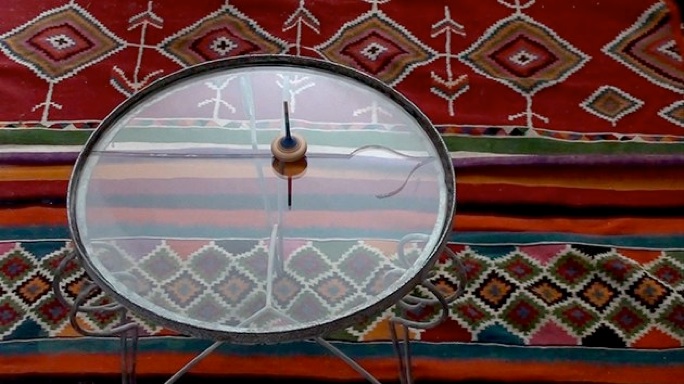
LONGS MÉTRAGES
COURTS MÉTRAGES



